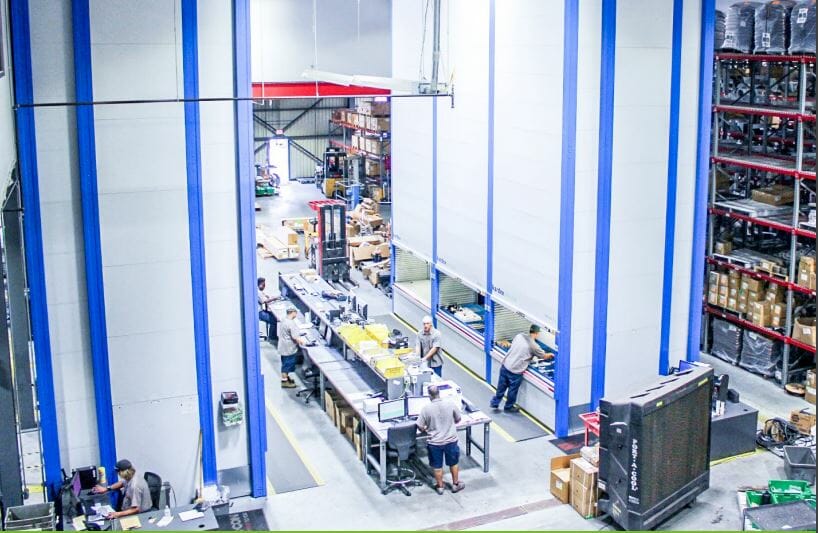Certain parts of the COVID impact – wearing masks, keeping a 2-meter distance from others, remote working/learning – are (fingers crossed) temporary. But the impact of COVID on the warehouse is going to be long and lasting. As the virus spread throughout the world, we saw a ripple effect; an outbreak or transportation delay in one part of the world had a devastating impact across the globe causing shutdowns due to warehouse closures or missing or delayed supplies. The global supply chain fought to keep up as the virus spread.
At the warehouse, some organisations were left with excess inventory they couldn’t ship sitting in inventory, while others were at a standstill as they waited to receive inventory at their depleted warehouse. Combining this supply chain nightmare with unpredictable consumer behaviour – some industries saw unprecedented demand, while other industries saw demand plummet – leaving warehouses in a bind.
Even after COVID is no longer a threat and the mask mandates go away, social distancing will continue. It might not be 2-meter, but warehouses will continue to keep workers spread further apart than they were pre-COVID. This includes keeping and maintaining the one-way traffic aisles, sanitisation stations and designated work areas. Keeping these precautions in place prevents the spread of a future pandemic, as well as the common cold or flu viruses. To ensure the overall health and safety of the workforce, some form of social distancing is here to stay.
Prior to the pandemic, most manufacturers had adopted lean manufacturing as a best practice. Receiving goods just-in-time (JIT) for manufacturing kept inventory costs down and utilised space more efficiently. When COVID hit, this lean strategy left many manufacturers with inventory shortages and in some cases caused production to stop completely.
While lean manufacturing will remain a best practice, the balance between JIT inventory and safety (buffer) stock will change. To prevent future inventory shortages leading to production shutdowns, manufacturers will keep more inventory on hand than before. Exactly how much more is up for debate such as issues around Brexit, overall inventory on-hand will increase.
This will only escalate warehouse space and capacity issues. Many warehouses struggled to make space for social distancing, and now they will need space to manage this additional inventory.
Warehouse automation has been gaining steady traction for years, but like many things, COVID will speed its adoption. As warehouses cope with adjusting inventory counts, making space for work in process (WIP), speeding order delivery, implementing social distancing and decentralisation they will turn to automated storage and retrieval systems to help reclaim floor space and improve the efficiencies of their workforce.
Automated storage and retrieval systems (ASRS) can recover up to 85% of existing floor space when compared to standard shelving. Warehouses will need this additional capacity to meet post-COVID challenges. Combined with pick-to-light systems and integrated inventory management software, ASRS can also help warehouses solve labour challenges and manage unpredictable spikes in order demand.
Post-COVID warehouse and distribution centers will be focused on agility. They will utilise technologies that can change picking strategies instantly and handle big swings in demand. To further improve efficiencies, companies will leverage software solutions to connect technologies throughout the warehouse for a more holistic and efficient order fulfilment process – from receiving and storage to picking and shipping. As warehouses look to position themselves for the future, automation will be a key factor.
As we settle into our post-COVID lives the only thing that is certain is that nothing is certain.
Companies are creating back up plans for their back up plans. With an unpredictable future, warehouse and distribution centers will look to be as adaptable and flexible as possible. Their main-focus will be on how to best utilise space and efficiently manage their biggest expense – labour. It’s time to start thinking long term. As we try to navigate our lives in today’s new “normal”, Kardex has a prepared a paper covering 15 ways COVID will impact warehousing and distribution forever. Please feel free to download the free paper.








